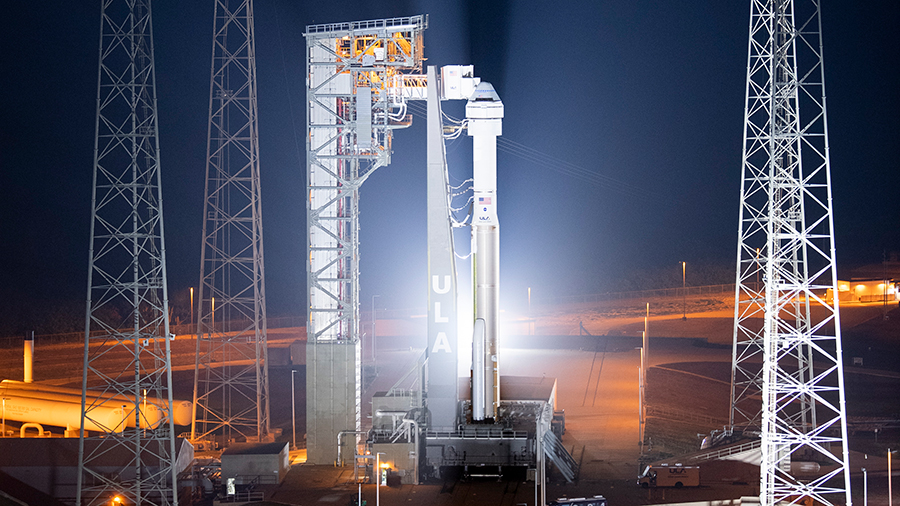
Boeing’s Orbital Flight Test-2 (OFT-2) mission is counting down to a liftoff at 6:54 p.m. EDT today to begin a 24-hour trip to the International Space Station. The Expedition 67 crew focused primarily on human research and cargo operations while also preparing for the OFT-2 mission’s arrival on Friday.
Starliner will launch uncrewed atop the United Launch Alliance Atlas-V rocket from Cape Canaveral Space Force Station in Florida. It will automatically dock to the Harmony module’s forward port at 7:10 p.m. EDT on Friday where it will stay for approximately five days of cargo and test operations. NASA TV begins live launch coverage on the NASA app and its website at 6 p.m. today.
On Wednesday, flight controllers notified the space station crew of the possibility of a close pass by orbital debris late Thursday, May 19 and the station executing a debris avoidance maneuver. Additional tracking data received overnight shows there is no longer concern for a close pass and no avoidance maneuver is required.
NASA Flight Engineer Kjell Lindgren spent Thursday afternoon setting up hardware and software that will help monitor the arrival of Boeing’s Starliner crew ship on the OFT-2 mission. Earlier, he conducted a pair of tests measuring his cognition and hearing levels to understand microgravity’s long-term effects on humans.
NASA astronauts Bob Hines and Jessica Watkins joined ESA (European Space Agency) astronaut Samantha Cristoforetti conducting cargo operations inside the Northrop Grumman Cygnus space freighter. The commercial cargo craft arrived at the station on Feb. 21 delivering 8,300 pounds of experiments and hardware. Cygnus will depart the station in mid-June loaded with trash and discarded gear for a fiery, but safe destruction above the south Pacific Ocean.
Hines and Watkins started the day collecting and stowing their blood samples for later analysis. Hines later serviced a variety of life support and research hardware. Watkins monitored her glucose level to understand the cardiovascular risk of living and working in space. Cristoforetti collected air samples to demonstrate analyzing trace atmospheric contaminants using the ANITA-2 (Analyzing Interferometer for Ambient Air-2) device.
Station Commander Oleg Artemyev packed the docked ISS Progress 79 crew ship with obsolete gear and checked its systems ahead of its departure in early June. Roscosmos Flight Engineers Denis Matveev and Sergey Korsakov worked on Russian life support gear and panel inspections inside the Zvezda service module.
Learn more about station activities by following the space station blog, @space_station and @ISS_Research on Twitter, as well as the ISS Facebook and ISS Instagram accounts.
Get weekly video highlights at: http://jscfeatures.jsc.nasa.gov/videoupdate/
Get the latest from NASA delivered every week. Subscribe here: www.nasa.gov/subscribe
